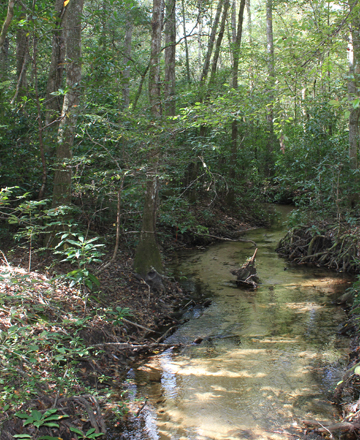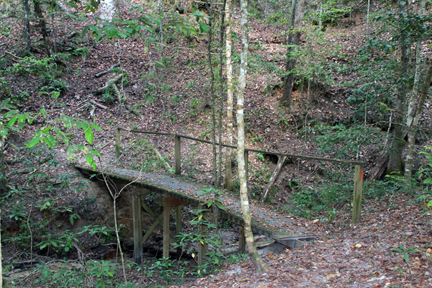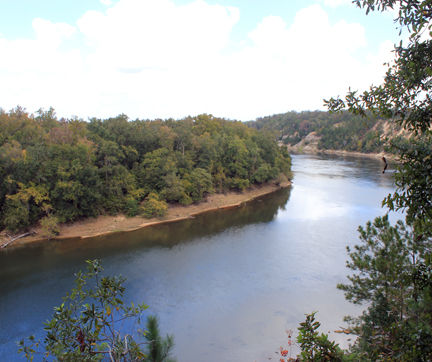
Diverse ecosystems and stunning vistas await your discovery
Get on your hiking boots, grab on to your trekking poles and head out to the Garden of Eden Trail. This 3.3 mi. steephead ravine and bluff in Bristol is one of Northwest Florida’s most beautiful hikes.
Situated adjacent to the Apalachicola River in Bristol, Florida, the trail is located within the Apalachicola Bluffs and Ravines Preserve. Owned and managed by the Nature Conservancy, the trail is open to the public for hiking from dawn to dusk, year-round.
The Trail begins along a restored long leaf pine/wiregrass upland area. Like most of Northwest Florida, this area was once cleared by timber production years ago. In 1985, the Nature Conservancy started restoration of this sandhill area, and today it boasts an abundance of long leaf, wiregrass and turkey oak.

Soon the trail starts changing into a hardwood hammock as it descends towards a scenic steephead ravine. Dynamic views into the depths of the steephead take over as you are soon immersed into an enchanted wonderland of ecological diversity. Unscathed by timbering due to its inaccessibility, the vast varieties of hardwoods are just a few reasons steepheads are so unique. This ravine boasts hickory, redbud, eastern hophornbeam, white oak, beech, magnolia, maple, sweetbay, holly, Florida anise, sweetgum, dogwood and swamp tupelo to name a few.
What is a steephead ravine?
A steephead ravine cuts into a sandhill upland area. The walls slope at a 45-degree angle towards the earth. Water percolates to beneath the sandy slopes rather than from the top of the ravine. The ravines are home to more than 100 rare and endangered species, including many endemic to the area.
The preserve provides home to an abundance of fauna such as cottontail rabbits, white-tailed deer, six-lined race runners, wild turkeys, gopher tortoises and snakes. Migrating and resident birds such as bald eagles, Mississippi kites, swallow-tailed kites, wild turkeys, worm-eating warblers, hooded warblers and Swainson’s warblers can also be found.

As the trail guides you down into the ravine, mountain laurel, fungi, lichen and a variety of perfect nesting opportunities for wildlife are discovered. The Apalachicola River area is some 30 million years old and many plants may be found that are from as far north as the Appalachian Mountains.
At the bottom of the steephead, a clear stream meanders across the forest floor. Once you cross the bottom of the forest and wind your way up to the top, you are treated to extraordinary panoramic views of the Apalachicola River, some 135 feet below.
The Garden of Eden Trail is extraordinary and a must for any nature enthusiast interested in exploring Northwest Florida’s ecological diversity.
Difficulty:
Many areas of the steephead ravine trail are narrow and, well, steep. If you are typically a Florida hiker, this hike is strenuous. If you are a seasoned hiker comfortable with steep inclines on mountainous terrain, this is a moderate hike. This hike is best traveled using trekking poles.
Bring plenty of water. The hike should take about three hours at a steady pace, four if you take your time, stop and ponder nature.
No dogs allowed.
Garden of Eden Trail is located just east of the Apalachicola River and North of State Road 20. Take State Road 20 to Bristol, and go north on County Road 12. Look for signs on the left. Click here for map.
Click here to download trail map: gardenofedentrailmap
